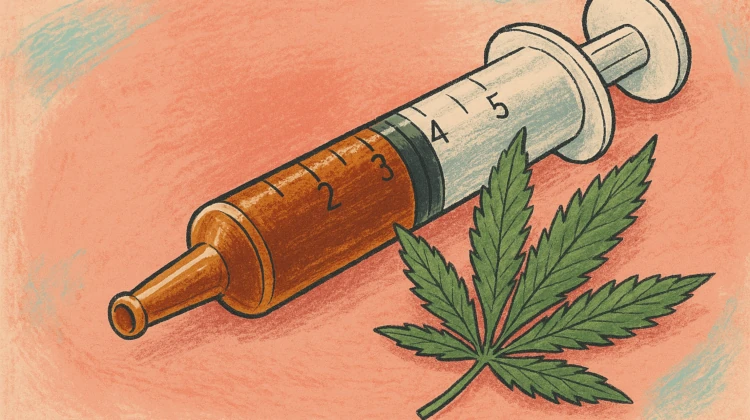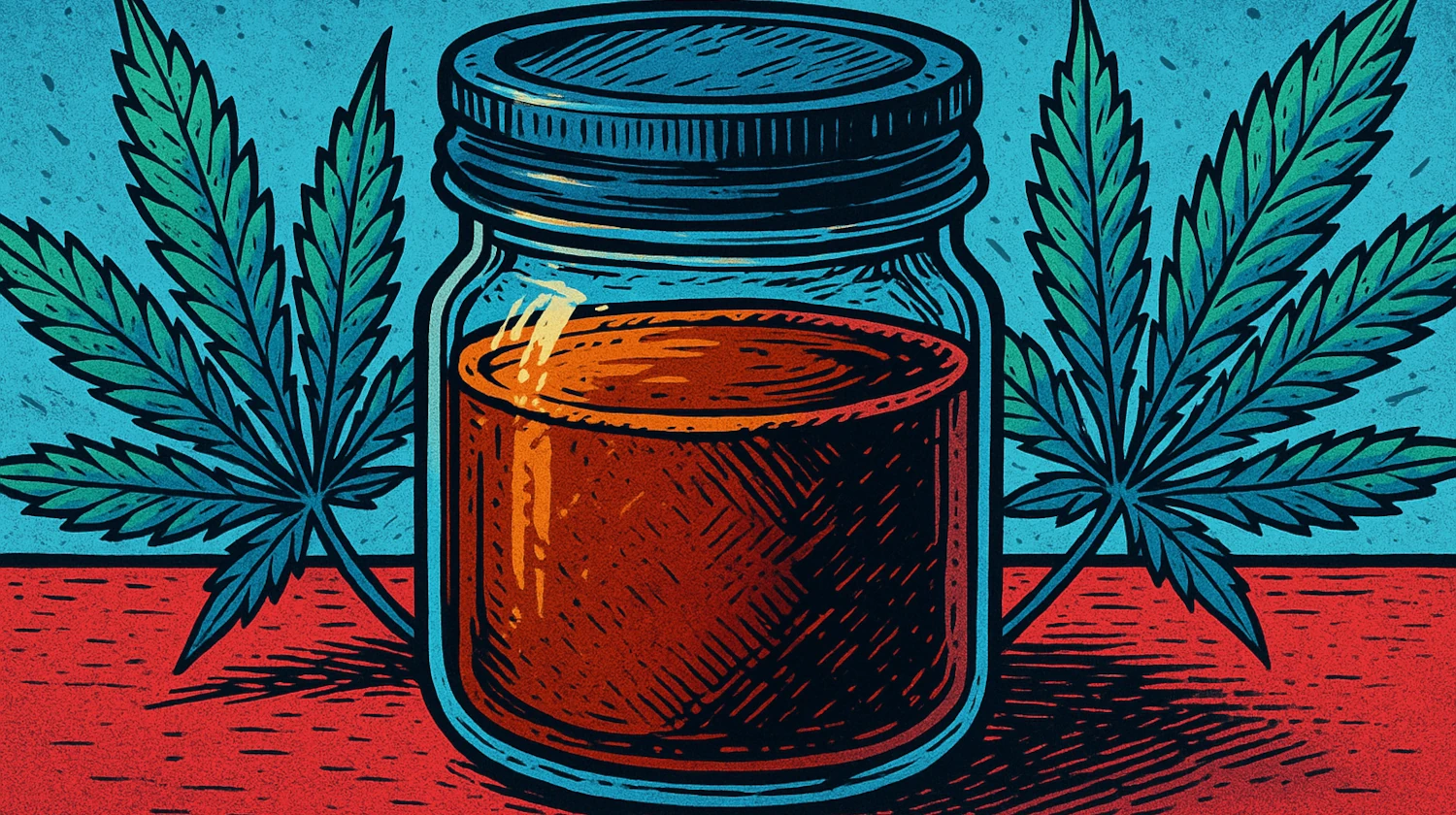In This Article
- What is RSO?
- What is an RSO Dosage Chart?
- How Does an RSO Dosage Chart Typically Work?
- How Do Different Ways of Using RSO Affect Dosage?
- Topical
- Swallowing RSO
- Sublingual
- Inhaled options (smoking or dabbing):
- Why Is an RSO Dosage Chart Not a One Size Fits All Solution?
- Tips for Trying RSO Safely
- How Medical Support Fits In
Key Takeaways About RSO Dosage Charts
- Rick Simpson Oil (RSO) charts simplify dosing by turning confusing potency numbers into easy visuals.
- Experiences vary by consumption method: edibles build gradually, inhalation lands fast but doesn’t last as long, and topicals work more on the surface.
- Charts are solid guides, but personal awareness and, when needed, professional input still matter most.
RSO is an extremely potent cannabis concentrate, so using an RSO dosage chart may not be as helpful as you think. Each person will react differently, and your body and individual tolerance will have a major impact. That's why starting with a very low dose and working up, preferably with the guidance of a medical cannabis doctor, is always the best route to take.
What is RSO?
Rick Simpson Oil, often shortened to RSO, is a thick, whole-plant cannabis extract.
Rick Simpson first created his namesake oil while looking for relief from his own cancer prognosis. From there, stories spread of people experimenting with the oil for various reasons. In time, it gained a reputation in cannabis circles as a potent, whole-plant extract.
RSO packs cannabinoids, terpenes, and other plant compounds into a tar-like oil. Some people put it right on the skin, while others mix it into edibles, dab it, or load it into a vape. No matter the application, dosage remains important.
What is an RSO Dosage Chart?
An RSO chart aligns milligrams with volume, using simple visuals to show how much is in a dose and how long the effects might last with different methods.
RSO usually comes in plastic syringes without a needle, making it easy to measure out the oil. But those tiny markings can be tough to read, and every batch can feel a little different in potency or texture.
That is where a chart helps, breaking tricky rice-grain sizes or syringe lines into clear milligram amounts. While patients often rely on them, anyone who enjoys RSO can use a chart to take the guesswork out.
How Does an RSO Dosage Chart Typically Work?
An RSO chart usually starts with the product’s concentration, measured in milligrams of THC per milliliter or per syringe. From there, it shows how much liquid matches a chosen milligram amount.
For example, if a syringe holds 800 milligrams of THC in one milliliter, then 0.025 milliliters comes out to about 20 milligrams.
Many charts simplify this by comparing it to a rice-grain-sized portion. The most useful charts also include details on onset and duration by method, offering a clear sense of when effects may happen and how long they might last.
How Do Different Ways of Using RSO Affect Dosage?

How RSO is taken shapes how quickly it kicks in, how long it lasts, and what the experience will likely feel like. Here are some of the most common methods with their typical timing:
Topical
RSO was first applied directly to the skin, and many people still use it that way today.
Topical use tends to bring localized effects rather than a strong head high. Timing can vary, but the effects are usually steadier and less overwhelming compared to eating, vaping, or smoking. Unlike ingested forms of cannabis, most topicals are not designed to reach the bloodstream or create a “high” effect.
Swallowing RSO
Effects typically begin within 30 minutes to two hours, depending on factors such as metabolism and the current contents of the stomach. The experience can last six to eight hours or more, often with a slow build and extended arc. This effect applies to both capsules and edibles.
Sublingual
When RSO is consumed under the tongue, cannabinoids absorb more quickly through the thin tissue in the mouth. Effects can begin within 15 to 45 minutes and often last four to six hours.
Inhaled options (smoking or dabbing):
When RSO is made for smoking or dabbing, effects can be felt almost immediately. Effects then usually last two to four hours, with a fast peak and a quicker fade compared to eating or swallowing the oil.
Because not all RSO is safe to heat, it’s important to check the formulation and safety information before smoking or dabbing.
Why Is an RSO Dosage Chart Not a One Size Fits All Solution?
Charts can point the way, but they can’t predict every individual factor like tolerance, metabolism, or how comfortable someone is with feeling high.
In short, everyone processes cannabinoids differently.
"Taking the same dosage as someone else doesn't guarantee the same outcome," says medical cannabis doctor Brian Kessler. "A dosage chart sounds nice in theory, but cannabis doses aren't one-size-fits-all. A patient's condition, symptoms, metabolism, past experience with cannabis, and other medications they're taking should all be considered before recommending dosage."
Products also vary. Cannabinoid ratios, terpene profiles, and carrier oils all shape the experience. Even two syringes both labeled 800 milligrams per milliliter may not feel the same, since batches can shift from run to run.
Health conditions and other medications add more layers. That is why charts work best as general guidance rather than strict directions. A trusted medical professional can help translate goals into a safe starting range and fine-tune them over time. Check in with one before trying RSO or any cannabis product for medical use.
Tips for Trying RSO Safely

- With awareness and planning, RSO can feel much easier to navigate.
- Above all, patience is key with RSO. Start with a very small amount and wait long enough to see how it feels before thinking about taking or applying more.
- Set yourself up for comfort in advance. Choose a safe, relaxed space, keep water and light snacks nearby, and avoid mixing RSO with alcohol. Storing the syringe in a cool, dark place helps maintain its stability.
- Once a dose is administered, slow and steady is the way to go. Pay attention to timing, mood, and environment, as they all shape the experience.
- Don’t forget to play it safe. Skip driving or risky activities afterward. If things feel too intense, move to a calm spot, focus on breathing, and watch for common signs of greening out.
How Medical Support Fits In
An RSO chart can’t account for personal health history, sensitivities, or other medications. A clinician can help translate general guidelines into an appropriate starting range and adjust as needed.
Looking to connect with a cannabis medical professional? NuggMD connects people with certified cannabis doctors online, providing access to individualized support at home. Contact us today to learn more.
The information in this article and any included images or charts are for educational purposes only. This information is neither a substitute for, nor does it replace, professional legal advice or medical advice, diagnosis, or treatment. If you have any concerns or questions about laws, regulations, or your health, you should always consult with an attorney, physician or other licensed professional.




